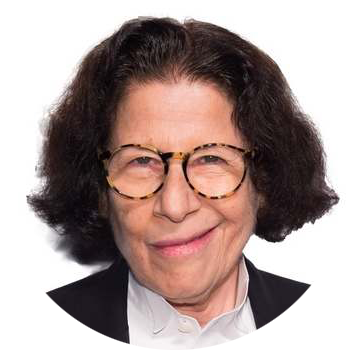In this article you will read about:
One of the foundational pillars of Cognitive Behavioral Therapy (CBT) is understanding the connection between thoughts, feelings, and behaviors. When negative patterns of thinking (often termed cognitive distortions) go unchecked, they can influence emotions and actions in maladaptive ways. A crucial step in breaking this cycle is to identify the distortion. In this article, we delve deep into this technique and its significance in the CBT framework.
What is "Identifying the Distortion"?
Cognitive distortions, as outlined by pioneers like Dr. David Burns and Dr. Aaron T. Beck, are irrational or biased ways of thinking that we all experience to varying degrees1. “Identifying the distortion” is the practice of pinpointing these flawed thought patterns when they occur. By naming and recognizing them, individuals can challenge and, ultimately, alter these thoughts.
As Dr. Beck notes, “Once you see how your cognitive distortions create your own reality, you’ll understand that these distortions don’t reflect reality. Then, you can change your way of thinking and lead a better life.“2
Common Cognitive Distortions
Recognizing distortions involves being familiar with the most prevalent ones. Some include:
Viewing situations in black and white, without middle ground1.
Drawing broad conclusions from a single event1.
Focusing exclusively on negative details, filtering out positive ones1.
Making negative interpretations without evidence1.
Blowing things out of proportion or undervaluing significant events1.
Believing because you feel a certain way, it must be true1.
"Once you see how your cognitive distortions create your own reality, you'll understand that these distortions don't reflect reality. Then, you can change your way of thinking and lead a better life."
Aaron Beck Tweet
Steps to Identify the Distortion
1. Awareness
Regularly check in with your thoughts, especially during emotional upheavals.
2. Documentation
Keep a thought journal to record specific thoughts, the situations in which they arise, and any associated feelings or behaviors.
3. Compare with Common Distortions
Reference a list of typical cognitive distortions to see if your thoughts align with any.
4. Seek Feedback
Sometimes, an external perspective (from therapists or trusted individuals) can help identify distortions you might have missed.
Why is this Technique Important?
1. Breaks the Cycle
By identifying distortions, individuals can halt the automatic progression from distorted thinking to negative feelings and behaviors.
2. Empowers the Individual
3. Promotes Rational Thinking
Recognizing distortions paves the way for rational and balanced thought processes.
4. Improves Emotional Well-Being
Challenges and Considerations
While identifying the distortion is immensely beneficial, it’s essential to recognize potential challenges:
Over-identification
Not all negative thoughts are distortions. It’s crucial to differentiate genuine concerns from irrational beliefs.
The Need for Practice
Identifying distortions becomes easier with practice and often requires ongoing effort.
Complement with Other Techniques
While identifying the distortion is powerful, it’s most effective when used alongside other CBT techniques, like cognitive restructuring5.
Conclusion
In conclusion, the ability to identify cognitive distortions is a transformative skill in the CBT arsenal. As we cultivate this awareness, we unlock the potential to reshape our mental landscapes, fostering resilience, empowerment, and well-being.
Identifying the Distortion Book Recommendations
Here is a collection of the best books on the market related to identifying the distortion:
Our commitment to you
Our team takes pride in crafting informative and well-researched articles and resources for our readers.
We believe in making academic writing accessible and engaging for everyone, which is why we take great care in curating only the most reliable and verifiable sources of knowledge. By presenting complex concepts in a simplified and concise manner, we hope to make learning an enjoyable experience that can leave a lasting impact on our readers.
Additionally, we strive to make our articles visually appealing and aesthetically pleasing, using different design elements and techniques to enhance the reader’s experience. We firmly believe that the way in which information is presented can have a significant impact on how well it is understood and retained, and we take this responsibility seriously.
Click on the icon to see all your thoughts in the Dashboard.
Your Thoughts about Identifying the Distortion
It’s highly recommended that you jot down any ideas or reflections that come to mind regarding identifying the distortion, including related behaviours, emotions, situations, or other associations you may make. This way, you can refer back to them on your Dashboard or Reflect pop-ups, compare them with your current behaviours, and make any necessary adjustments to keep evolving. Learn more about this feature and how it can benefit you.
References
Burns, D. D. (1980). Feeling good: The new mood therapy. New York: New American Library.
Beck, A. T. (1976). Cognitive therapy and the emotional disorders. New York: International Universities Press.
Burns, D. D. (1999). The feeling good handbook. New York: Plume.
Hofmann, S. G., Asnaani, A., Vonk, I. J., Sawyer, A. T., & Fang, A. (2012). The Efficacy of Cognitive Behavioral Therapy: A Review of Meta-analyses. Cognitive therapy and research, 36(5), 427-440.
Beck, J. S. (2011). Cognitive behavior therapy: Basics and beyond. New York: Guilford Press.




